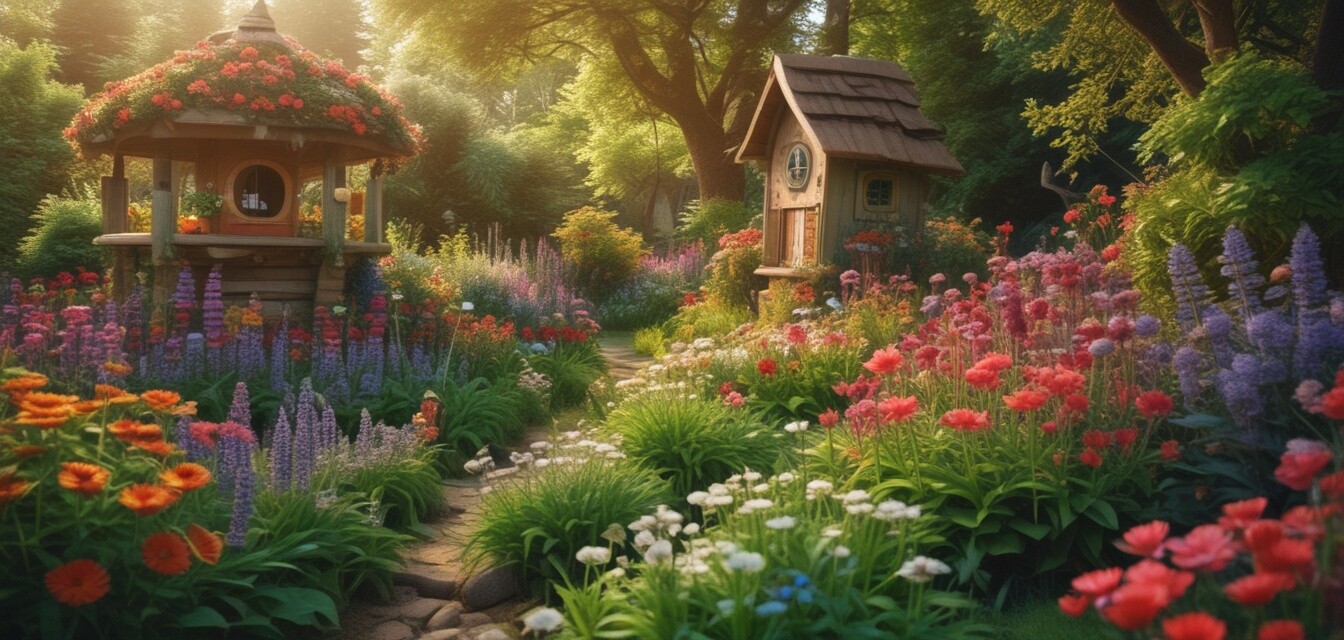
Incorporating Wildlife-Friendly Features in Gardens
Key Takeaways
- Providing habitats like birdhouses and bee hotels encourages local wildlife.
- Incorporating native plants is beneficial for local ecosystems.
- Simple water features can attract a diverse range of wildlife.
- Wildlife-friendly gardens not only enhance biodiversity but also enrich your garden's beauty.
Creating a wildlife-friendly garden is an excellent way to celebrate nature while enhancing your own outdoor space. By incorporating features that support local wildlife, you not only create a thriving ecosystem but also enjoy the beauty and activity that comes with it.
Why create a wildlife-friendly garden?
Wildlife-friendly gardens are vital for conservation efforts and can significantly boost biodiversity. By creating habitats for birds, bees, and other beneficial creatures, you are contributing to the wellbeing of local ecosystems.
Benefits of attracting wildlife
- Pollination of plants, leading to better yields for edible gardens.
- Natural pest control, reducing the need for chemical pesticides.
- Enhancement of garden aesthetics through the diverse presence of wildlife.
- Providing educational opportunities for children and adults alike.
Essential features for a wildlife-friendly garden
Here are some of the most effective features you can incorporate into your garden to attract and support various wildlife.
1. Birdhouses
Birdhouses provide essential shelter for nesting birds. Make sure to choose designs suitable for local bird species.
2. Bee hotels
These structures offer safe nesting spaces for solitary bees, which are important for pollination. Place them in sunny spots, ideally sheltered from rain.
3. Native plants
Native plants are adapted to the local environment and provide food and shelter for wildlife. Here are some popular native species:
| Plant Type | Benefits |
|---|---|
| Wildflowers | Attract pollinators like butterflies and bees. |
| Grasses | Provide food and habitat for small mammals and insects. |
| Shrubs | Offer shelter and nesting sites for various birds. |
4. Water features
Adding a small pond, birdbath, or fresh water bowl can greatly enhance the diversity of species in your garden. It provides a critical resource for drinking, bathing, and breeding.
5. Compost pile
Wildlife, such as ants and earthworms, help decompose organic matter. Home composting can draw various beneficial creatures to your garden, enriching your soil and helping your plants thrive.
Maintenance tips for a wildlife-friendly garden
It is important to maintain the features in your garden to keep them effective for wildlife. Here are some tips:
- Regularly check birdhouses to ensure they are clean and free from pests.
- Plant native species at appropriate times for optimal growth.
- Keep water features clean to promote healthy ecosystems.
- Avoid using pesticides to ensure a safe environment for wildlife.
Contribute to conservation efforts
Every garden can play a role in conservation. Check out our section on Eco-Friendly Fertilizers to boost plant health sustainably. For tips on managing waste, explore our Composting & Waste Management category, and discover how your efforts can contribute to the environment.
Pros
- Encourages local biodiversity.
- Supports pollinators and wildlife.
- Enhances the beauty of your garden.
- Offers educational opportunities for children.
Cons
- May require some initial investment for features.
- Initial maintenance can be time-consuming.
- Wildlife can sometimes lead to plant damage.
Conclusion
Incorporating wildlife-friendly features in your garden is a rewarding endeavor. Not only do you create a beautiful outdoor space, but you also contribute to local ecosystems and help sustain the wildlife that shares the environment. Implement these tips and enjoy the vibrant life your garden will attract!
For more gardening inspiration, check out our Garden Inspiration category for tips and ideas!